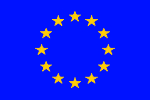The Helmholtz-Zentrum Berlin für Materialien und Energie GmbH (HZB) is a legally independent member of the Helmholtz Association of German Research Centres. The HZB has an annual budget of approximately 150 million € and ca. 1,100 employees. The HZB’s research focuses on energy and energy materials for solving grand societal challenges. The HZB operates the BESSY II synchrotron for materials research with some 50 beamlines, each of which offers the latest methods in spectroscopy and microscopy and hosts more than 1,500 guest researchers each year. The HZB institute that will participate in the TELEGRAM project namely, the Kompetenzzentrum Photovoltaik Berlin ( PVcomB), offers companies and industrial partners, a unique point of contact for technology transfer.
Technological advancements in the field of photovoltaics and solar fuels are promoted in several joint research and development projects. It runs a CoreLab that is equipped with a variety of large scale industrially relevant deposition systems and equipment for state-of-the art analytics and modelling are used to optimize processes, device performance and reliability. The institute also has a dedicated laboratory with several test set-ups and equipment for characterizing catalysts and for in operando testing of electrolysers and fuel cells for power ratings up to 1kW.
ROLE IN TELEGRAM
HZB leads the design and building of the direct ammonia fuel cell (DAFC) in WP5.
HZB leads the modelling and simulation workpackage (WP3), within which it will develop multi-phase, multi-physics simulation models for both the fuel cell and electrolysis cell as well as for components thereof.
In WP6, HZB shall further support the project with integrating the DAFC in the demonstrator of the complete ammonia cycle powered by renewable energy sources. Additionally, HZB shall further contribute by performing the life cycle assessment of the integrated NH3 energy system.
The HZB shall also contribute to WP2 by developing and testing non-platinum group electrocatalysts for the oxygen reduction reactions and ammonia oxidation reactions in the DAFC, in close cooperation with Uppsala University and CNR.
WP3 Leader
Dr. Erno Kemppainen
WP5 Leader
Dr. Sonya Calnan








 Visit Today : 40
Visit Today : 40 Total Visit : 151034
Total Visit : 151034 Who's Online : 5
Who's Online : 5